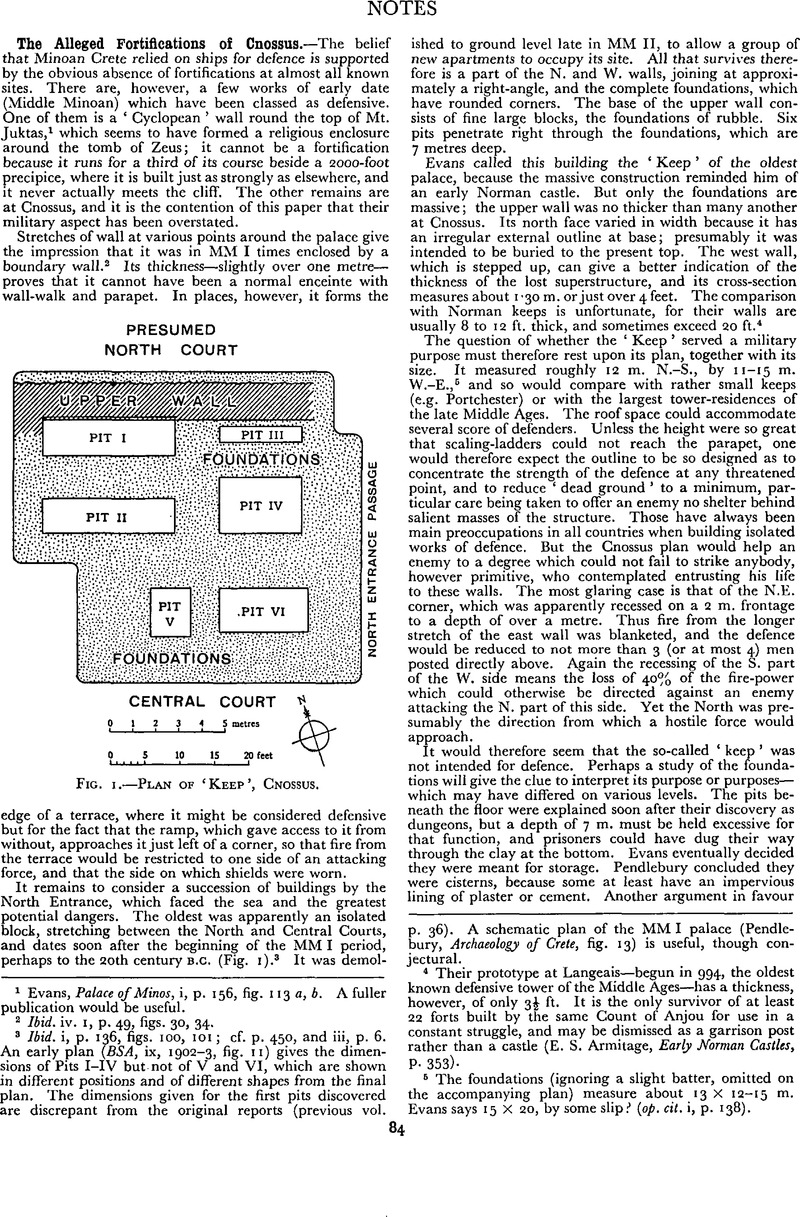Published online by Cambridge University Press: 18 September 2015

1 Evans, , Palace of Minos, i, p. 156, fig. 113 a, b.Google Scholar A full publication would be useful.
2 Ibid. iv. 1, p. 49, figs. 30, 34.
3 Ibid. i, p. 136, figs, 100, 101; cf. p. 450, and iii, p. 6. An early plan (BSA, ix, 1902–1903, fig. 11) gives the dimensions of Pits I–IV but not of V and VI, which are shown in different positions and of different shapes from the final plan. The dimensions given for the first pits discovered are discrepant from the original reports (previous vol. p. 36). A schematic plan of the MMI palace (Pendlebury, Archaeology of Crete, fig. 13) is useful, though conjectural.Google Scholar
4 Their prototype at Langeais–begun in 994, the oldest known defensive tower of the Middle Ages–has a thickness, however, of only 3½ ft. It is the only survivor of at least 22 forts built by the same Count of Anjou for use in a constant struggle, and may be dismissed as a garrison post rather than a castle (Armitage, E. S., Early Norman Castles, P3. 353Google Scholar).
5 The foundations (ignoring a slight batter, omitted on the accompanying plan) measure about 13 × 12–15 m. Evans says 15 × 20, by some slip? (op. cit. i, p. 138).
6 In the West Court 7·75 deep at one point, over 9 m. at another (ibid. i, p. 34, fig. 4). Evans speaks of the Keep being cut in ‘the Neolithic cliff’, and of the ground falling away around there (pp. 136, 149).
7 Annual rainfall 20 in. or 50 cm.; practically nil from June to August and trifling in September. The roof could catch 75 (150 × 0·50) cubic metres and the pits could hold 260 (37 × 7) cu. m.
8 Ibid. i, fig. 152.
9 The foundations between Pits I to II and III to IV suggest a partition on the first as well as the ground floor.
10 Ibid. i, p. 307, figs. 223, 226.
11 Ibid. i, p. 393, figs. 152, 286; ii. 1, plan A.
12 Evans and Pendlebury have noted a number of wayside police-posts or ‘forts’, but there is no clear indication that any of them had a more military character than the average modern gendarmerie-post.